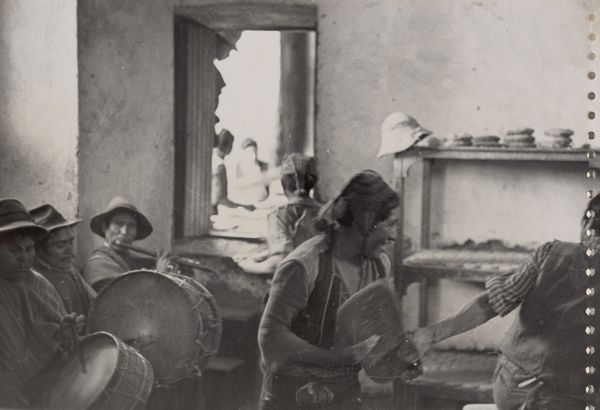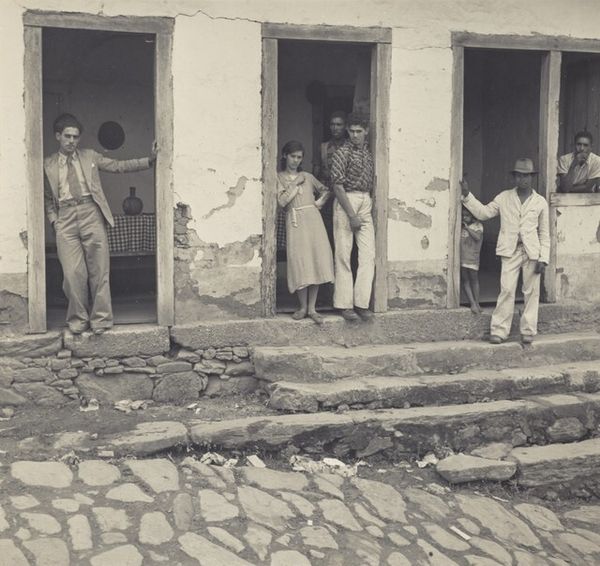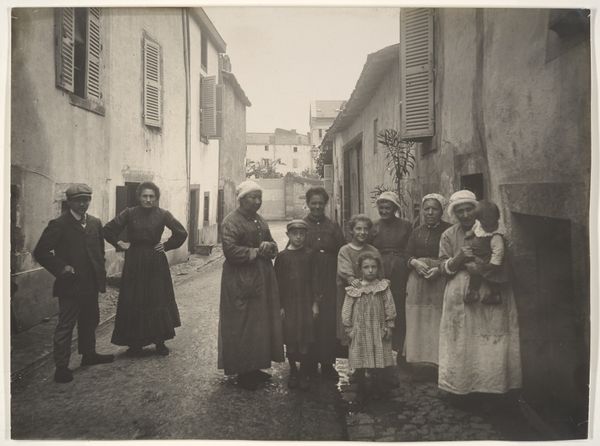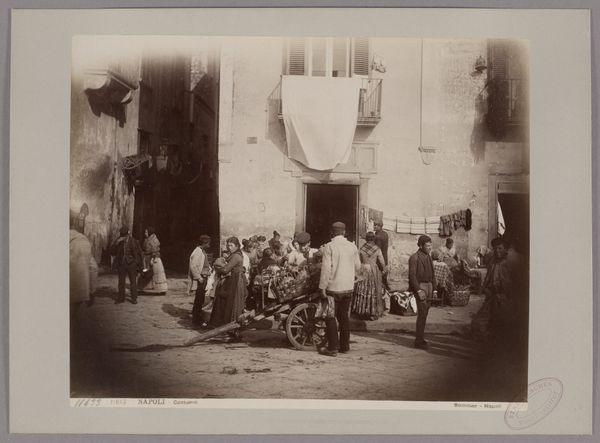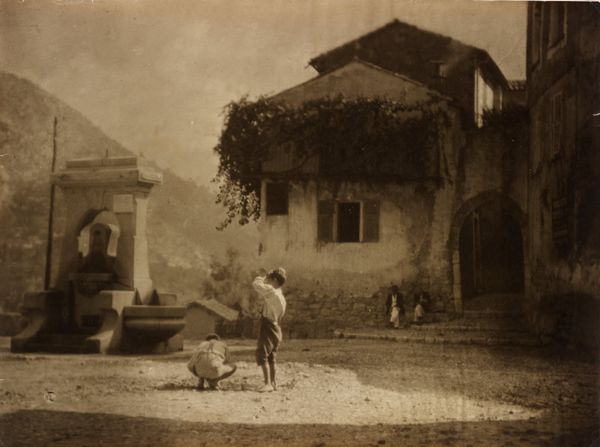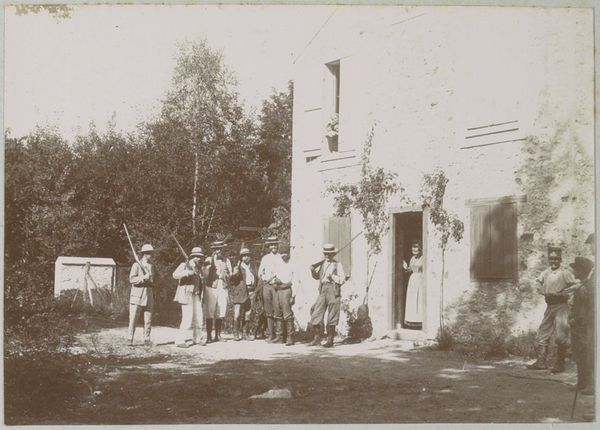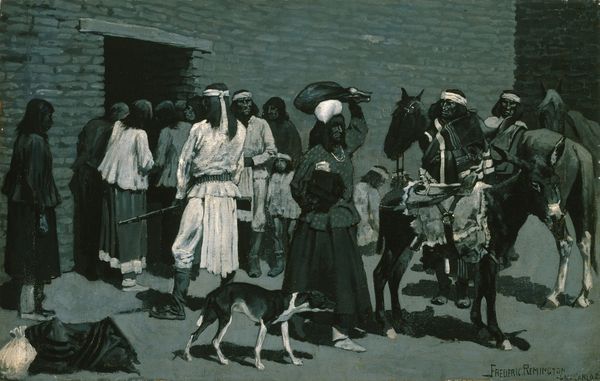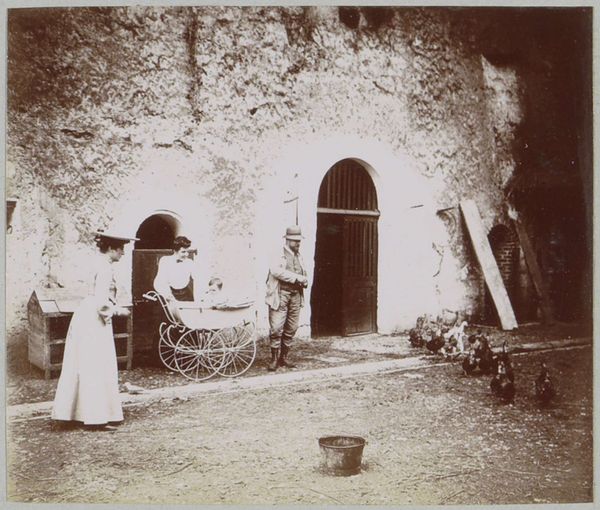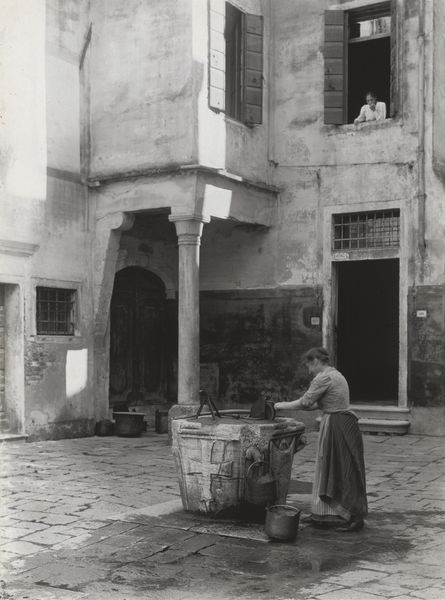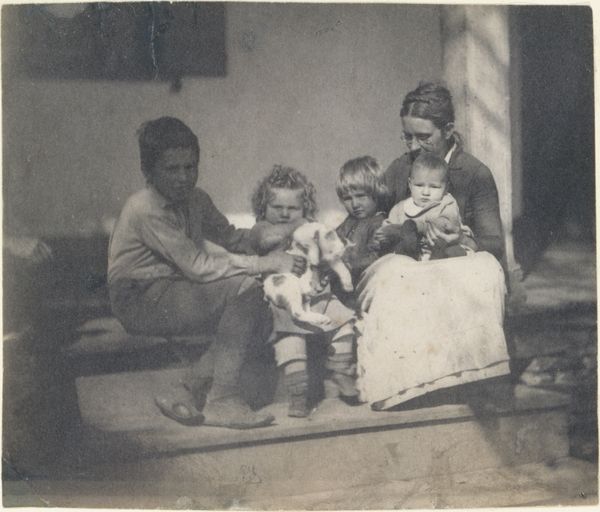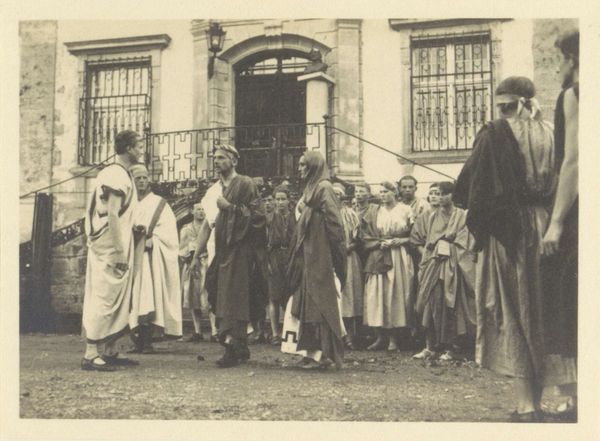
photography, gelatin-silver-print
#
portrait
#
impressionism
#
photography
#
historical photography
#
gelatin-silver-print
#
19th century
#
genre-painting
Dimensions: sheet (trimmed to image): 11.7 × 14.7 cm (4 5/8 × 5 13/16 in.) mount: 52 × 36.5 cm (20 1/2 × 14 3/8 in.)
Copyright: National Gallery of Art: CC0 1.0
Editor: This is "The Last Joke—Bellagio or A Good Joke" by Alfred Stieglitz, taken in 1887. It's a gelatin-silver print depicting a group of children in what appears to be a candid moment. I'm really struck by the texture in this photograph, how the light catches the rough surfaces. What catches your eye about it? Curator: What I notice first is the tension between the supposed spontaneity and the constructed nature of the image itself. Stieglitz was a champion of photography as fine art, a material pursuit rather than just a means of documentation. This "snapshot" of working class children, therefore, has to be considered in the light of its deliberate creation and later consumption as art object. How does that affect your viewing? Editor: That's a really interesting point. Knowing it’s carefully composed definitely shifts my understanding. It makes me think about Stieglitz's intentions. Were these children paid, were they aware they were models, and how that labor affected the making of the photograph? Curator: Precisely. We should think about how his use of photography elevated the everyday lives of ordinary people into a fine art. It highlights questions about the process. Where were gelatin silver prints being manufactured? How were these reproduced and who could afford it? Editor: I see how your perspective sheds light on both the artistry and the means by which this art came into being. The choice of subject matter becomes more meaningful in relation to the methods and materials employed. Curator: Exactly. It encourages us to consider the social implications embedded within the photographic process itself, the materials and economics behind the finished work. I've found it to be the key in all arts. Editor: Thinking about this as a material object gives me a better grasp on the photograph as a work of art within a specific social context. Curator: Hopefully, you will never see art again without thinking about the modes of its production.
Comments
No comments
Be the first to comment and join the conversation on the ultimate creative platform.
